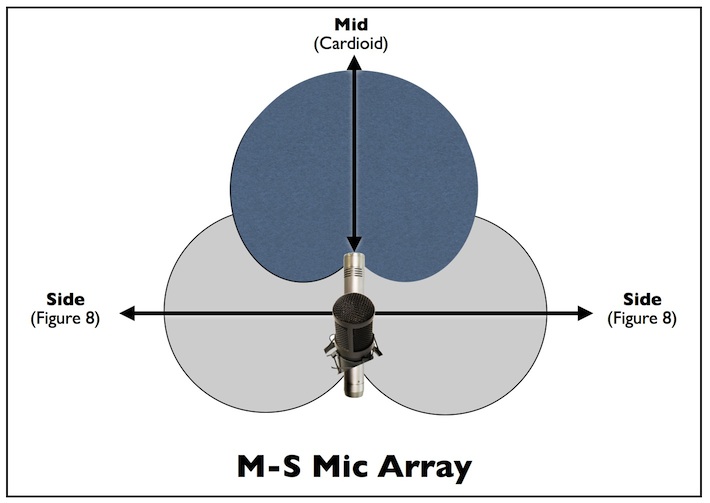LaceSensor
Member
Hello,
I am reading a book now which describes a M/S mic technique which uses a cardiod dynamic mic (on-axis) and a figure 8 mic (sideways 90°/270°). I am also familiar with plugins which have M/S processing. Therefore I am slightly confused.

1) does a M/S mic setup require additional M/S processing?
2) should M/S plugin processing be activated when using a M/S track?
I've seen one article which described reversing the polarity on the (S-) as compared to the (S+) and (M). However with the above mic technique there would only be one track for the (S) as compared to having individual/separate tracks for (S-) and (S+).
I am just trying to learn how I could start to use M/S in my recording and mixing. I think my confusion is stemming from the fact that some of these plugins with M/S processing are actually looking for a (L/R) stereo signal as the input. On top of this I believe there may be some required processing for a track which is recorded using a M/S mic technique.
I am reading a book now which describes a M/S mic technique which uses a cardiod dynamic mic (on-axis) and a figure 8 mic (sideways 90°/270°). I am also familiar with plugins which have M/S processing. Therefore I am slightly confused.

1) does a M/S mic setup require additional M/S processing?
2) should M/S plugin processing be activated when using a M/S track?
I've seen one article which described reversing the polarity on the (S-) as compared to the (S+) and (M). However with the above mic technique there would only be one track for the (S) as compared to having individual/separate tracks for (S-) and (S+).
I am just trying to learn how I could start to use M/S in my recording and mixing. I think my confusion is stemming from the fact that some of these plugins with M/S processing are actually looking for a (L/R) stereo signal as the input. On top of this I believe there may be some required processing for a track which is recorded using a M/S mic technique.
Last edited:


